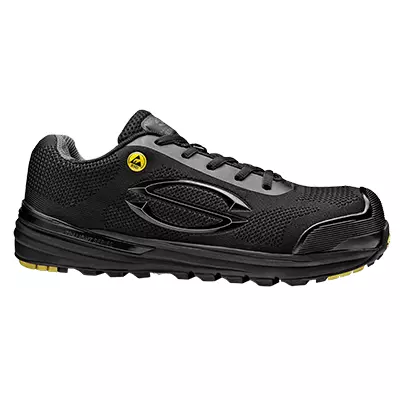
Features You'll Love

Outsole Properties · Puncture Resistant, Shock Absorbing
Protect your feet from sharp objects and unseen hazards, giving you peace of mind on any job site.
Shock-absorbing soles provide cushioned comfort, reducing impact and foot fatigue for all-day wear.

Toe Cap Material · Fiberglass
The material used in the protective toe cap, determining the level of impact protection, weight, and suitability for different work environments.
Sir Safety System
Factor Ultra Light Shoe Black
Factor Ultra Light Shoe Black
5 / 5
812,98 kr
Choose size
Free delivery
Features You'll Love

Outsole Properties · Puncture Resistant, Shock Absorbing
Protect your feet from sharp objects and unseen hazards, giving you peace of mind on any job site.
Shock-absorbing soles provide cushioned comfort, reducing impact and foot fatigue for all-day wear.

Toe Cap Material · Fiberglass
The material used in the protective toe cap, determining the level of impact protection, weight, and suitability for different work environments.
Product description
Product Features:
- Metal-free dissipative shoe
- Fibreglass toecap
- Composite puncture-resistant midsole
- Antistatic properties
Upper:
- Polyester mesh
Lining:
- Polyester with high draining power
- High absorbing properties
Insole:
- Two-component material
- Shell in polyurethane foam and memory PU
- Variable thickness: 4 mm at front, 9 mm in heel area
- Considerable anti-shock properties
Sole:
- EVA/Rubber combination
- Highly expanded EVA material for flexibility and lightness
- Outsole in nitrile rubber for perfect adhesion on dry and wet surfaces
Technical Details:
- Puncture-resistant midsole thickness: 4 mm
Standards:
- EN ISO 20345 S1P SRC
- EN 61340